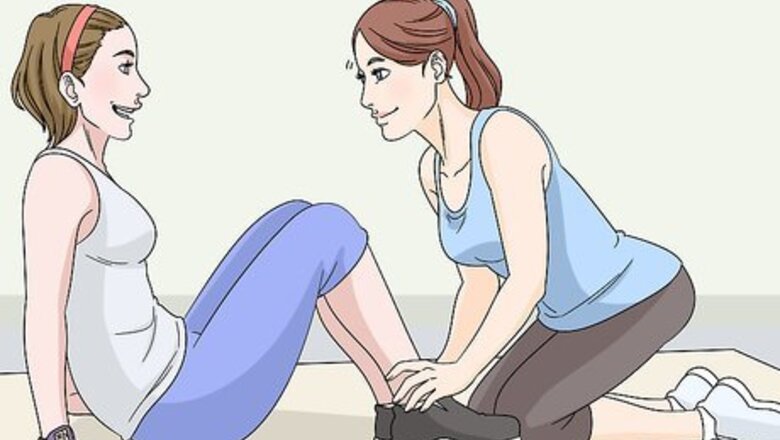
views
X
Trustworthy Source
Science Direct
Online archive of peer-reviewed research on scientific, technical and medical topics
Go to source
A strong, stable core impacts how you perform pretty much any daily activity and can also help prevent injuries.[2]
X
Trustworthy Source
Harvard Medical School
Harvard Medical School's Educational Site for the Public
Go to source
Because the core is made up of many muscles, there are many different ways you can test your overall core strength. If you find room for improvement, start an exercise plan targeted toward strengthening your core.
Testing Abdominal Strength and Endurance
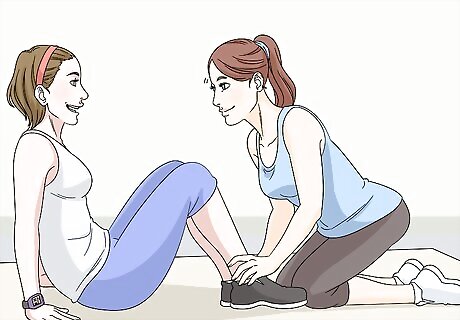
Get a friend or family member to assist you. The results of your 30-second sit-up test will typically be more accurate if you have someone else keeping time for you. They can also watch your form and ensure that only the sit-ups done with proper form are counted. The person who helps you typically will also hold your feet to stabilize you and keep you from lifting them off the ground.
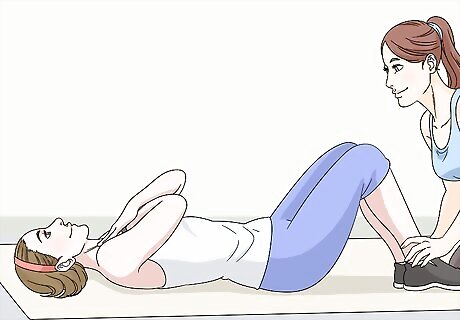
Lie flat on your back with your knees bent. Get an exercise mat to lie on, then lie flat on your back. Bend your knees so that your feet are resting flat on the floor. Roll your shoulders back so that your shoulder blades are lined up flat along either side of your spine. Make sure your back is in a neutral position with your lower back pressed against the floor. Maintain this position throughout the test.
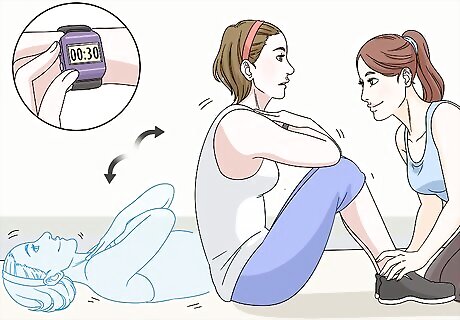
Start the timer and do as many sit-ups as you can in 30 seconds. Place your hands on your ears with your elbows forward and signal to your assistant that you're ready. Your assistant will tell you when to start. Sit up, touching your elbows to your knees, then immediately lower back to the floor. As soon as your back hits the floor, sit up again. Take care not to crunch your neck — keep it long and relaxed. Rest your hands lightly on your ears. Don't use your hands to pull yourself up from your head or neck as this could cause neck injuries.
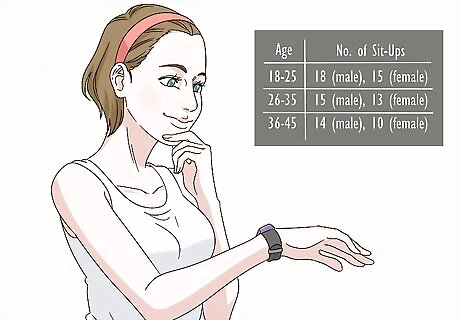
Check your results against the normative standards for your age group. The number of sit-ups you can do in 30 seconds will naturally decrease as you age, even if you're in prime physical shape. You can search for "30-second sit-up test normative data" online to look at many different charts and compare your results. The following are average results for a few age groups: 18-25: average of 18 for males, 15 for females 26-35: average of 15 for males, 13 for females 36-45: average of 14 for males, 10 for femalesTip: If you performed more sit-ups than the average for your age group, you have good abdominal strength and endurance. If you performed fewer than the average, you likely want to work on strengthening your core.
Determining Your Static Stability
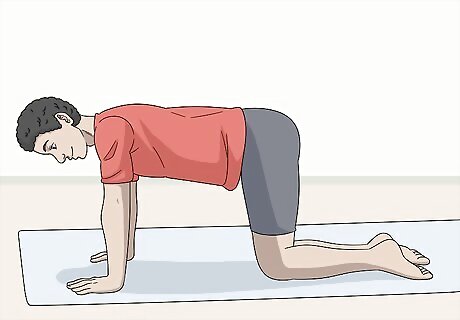
Start on your hands and knees. Get an exercise mat and lower yourself to your hands and knees. Place your wrists directly under your shoulders and your knees directly under your hips. Take a moment before you start to connect with your breath, taking a few deep breaths in and out as you focus on your core.
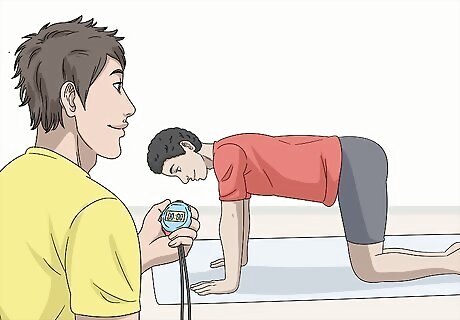
Set up a timer to run while you hold a plank position. You might want to recruit an assistant to keep time for you so you can concentrate solely on your plank position. However, if there's no one available, you can still do this test by yourself using a digital kitchen timer or the stopwatch app on your smartphone. If you're doing the test by yourself, set it where you can see it so you can make a mental note of the second you got into the position and the second you stopped for a more accurate reading. For example, if you didn't get into the position until 3 seconds had passed, you would subtract 3 seconds from your final time.
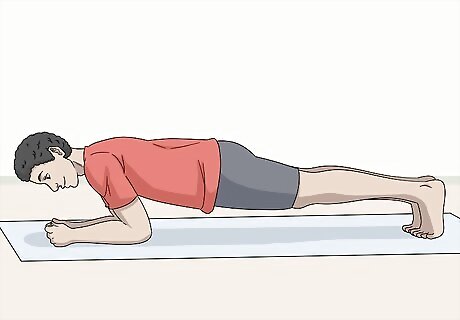
Extend your legs into the plank position. Straighten your knees and push your feet out behind you until you're on your toes. Roll your shoulders back away from your ears so that your body is forming a straight line from the back of your heels to the backs of your shoulders. Keep your gaze forward with your neck loose. This is the full plank position. If this is too hard on your wrists, try a modified plank position with your forearms flat on the mat and your elbows in line under your shoulders. Either the full plank or the modified plank are adequate tests of core strength.
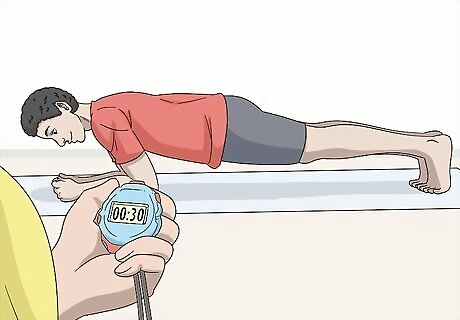
Hold the position as long as you can with good form. Once you've stabilized yourself in the position, focus on your breath and engage your core to hold the position. Aim to hold the position for at least 30 seconds. You have good static stability and core strength if you can hold a plank for at least 30 seconds. If you can hold the plank for longer, you have excellent core strength.Tip: Make sure you're breathing deeply the entire time you're holding the plank position. It's common to want to hold your breath while you're holding the position, but your breath will actually keep you more stable.
Assessing Your Dynamic Stability
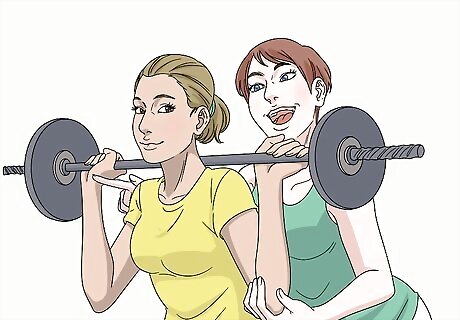
Go to a gym with free weights you can use. Loaded carries test your dynamic stability — your core strength while moving. For this test, you'll need to be at a gym, preferably with someone to spot you (especially if you're going to be dealing with heavy weights). You'll also need free space to move around because this test requires you to walk around with the weights for at least 30 seconds.Warning: This test is more suited to experienced weightlifters and people who feel comfortable lifting free weights in a gym setting. If you don't have experience lifting and carrying heavy weights, you might want to use a different test.
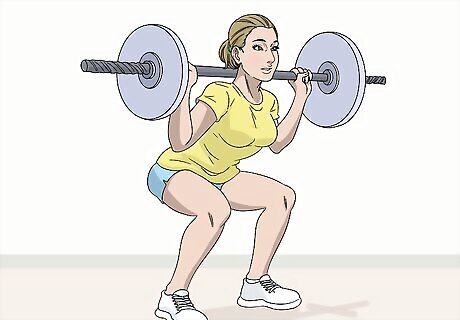
Practice your form with just a barbell. This test won't measure your core strength accurately if you're recruiting other muscles to help you carry the load. Hold the barbell with your arms fully extended. Keep back neutral and your shoulders flat with your shoulder blades folded back along either side of your spine. Check your form in a mirror or ask your spotter for pointers. Keep in mind that you'll have a much greater tendency to hunch over once you've loaded weight onto the barbell.
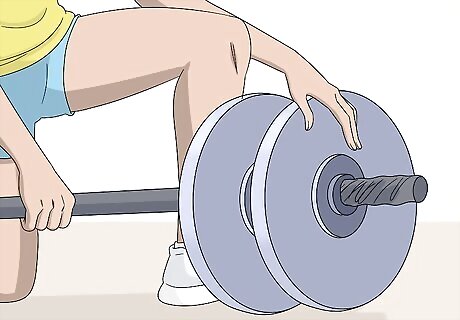
Add a near maximal weight to the barbell. The amount of weight you choose depends on your overall fitness and how much weight you normally lift. You typically want to start with at least your own body weight. However, if you lift weights regularly, you might want to start with more. If you frequently deadlift, you might start with the weight that you can comfortably deadlift.
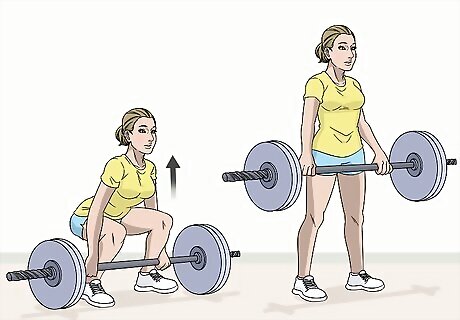
Deadlift the load off the floor and stabilize the weight. Bend your knees and grab the barbell with your hands shoulder-width apart. Keep your gaze forward and your neck neutral as you drive upward to lift the weight. Hold it stable for a second as you breathe deeply, making sure your grip is stable. If you can't deadlift the weight you loaded, start over with less weight. Always have a spotter, especially if you are lifting more than your bodyweight.
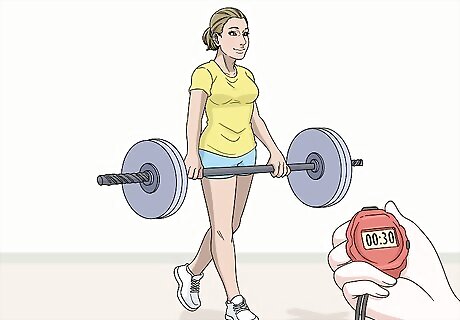
Walk around with the weight for at least 30 seconds. Once you have the weight stabilized, start walking at a steady speed. Don't try to walk too fast — you're going for time here, not distance. Keep your back neutral and your shoulders back. Ultimately, if you can walk around using good form with at least your body weight, you have good core strength. Elite athletes or seasoned weightlifters should be able to complete this test with at least twice their bodyweight.
Evaluating Your Overall Core Stability

Ask a friend or family member to keep time for you. Because this test involves a lot of timing, you'll need someone else to keep the time for you. Although it's possible to do it on your own, your results won't be as accurate. Go over the full test with your assistant beforehand so they'll know how to guide you and when to start and stop the timer.
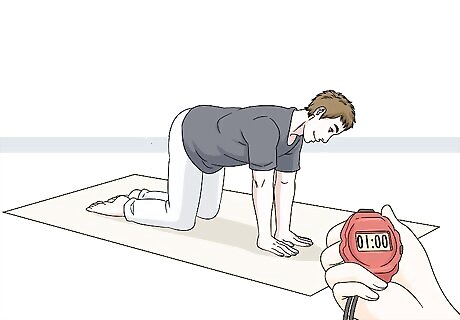
Start in a modified plank position. Lower to your toes and elbows with your forearms resting on the floor. Stack your elbows in line below your shoulders. Take a moment to connect with your breath and get stable in the position, then signal to your assistant that you're ready. Once you're in the plank position, hold the position for 60 seconds.
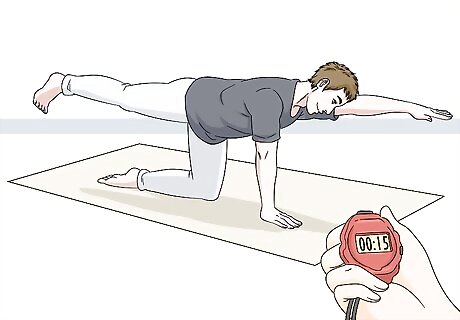
Extend alternating limbs for 15 seconds each. The next part of the test starts immediately after the 60-second plank. Extend your right arm in front of you at a straight line from your shoulder. Hold that position for 15 seconds, then return it to the starting position. Repeat with your left arm, holding it straight out in front of you for 15 seconds. Then return to start. Raise your right leg behind you and extend it parallel to the floor. Hold it in that position for 15 seconds, then return it to the starting position. Repeat the same movement with your left leg, holding it for 15 seconds.Tip: If you fall over or lose your balance at any point during the test, stop. Mark that point in the test as the furthest you got.
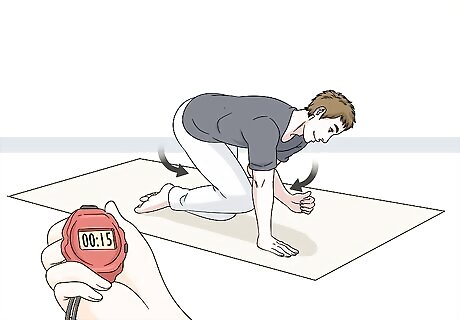
Combine opposing arms and legs for 15 seconds each. Without resting, raise both your right arm and your left leg at the same time. Hold the position for 15 seconds, then lower back to start. Repeat with your left arm and right leg. If you can complete the test, you have good core strength. If you can't complete the test, write down the date and how far you got. After you do some strengthening exercises, you can take the test again and compare.Tip: You can also do this test as a regular exercise to help build the strength and stability in your core.
Strengthening Your Core
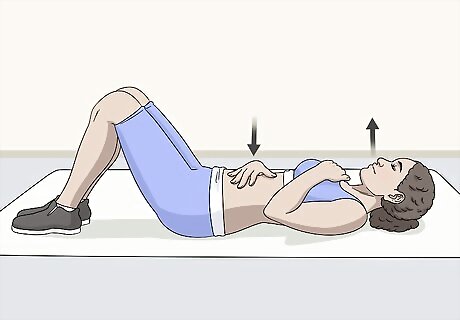
Engage your core with deep-breathing exercises. Deep-breathing exercises are a good way to start and end any workout session, but especially one that is focusing on your core. Squeeze your core muscles to push the air out as you exhale. For a basic breathing exercise, lie on your back on the floor with your knees up and your feet flat on the floor. Place one hand on your stomach and the other above it on your chest. Inhale slowly, watching the hand on your stomach rise. Hold the air for a second, then exhale, allowing the hand on your stomach to lower. If you're doing a breathing exercise with your hand on your stomach, don't press your stomach with your hand as you exhale. Let your core muscles do that work.
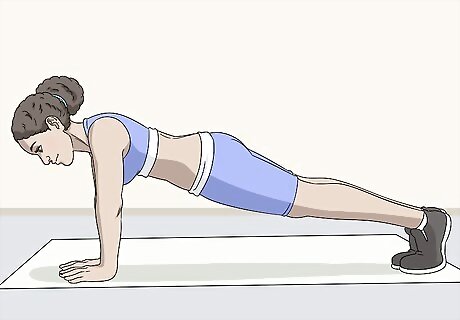
Start with the basic plank. You may have used the plank to test your core strength, but you can also use it to increase the strength and stamina in your core muscles. Use a timer and gradually increase the amount of time you remain in the position. For example, suppose when you start you can only hold the plank position for 10 seconds. Practice your 10-second plank every day for a week. The following week, hold the plank position for 15 seconds. If 15 seconds is too long, drop it back to 11 or 12, then try 15 the next week. For a full plank position, start on all fours with your wrists directly under your shoulders. Then, extend your legs behind you so that your body is a straight line from your toes to your shoulders.Tip: Either a full plank or a modified plank works for this exercise. If a full plank is too hard on your wrists, lower to your forearms.
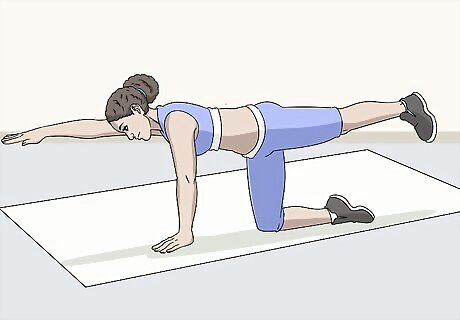
Use bird-dog crunches to build balance and stability. To do this exercise, start on all fours on an exercise mat. Line up your wrists directly under your shoulders and your knees directly under your hips. Extend opposing limbs in front and behind you, then crunch them together so that your elbow and knee touch your chest. Return to your starting position and do the same with the other arm and leg. Do at least 10 repetitions of this exercise. For example, you might start with your right arm and left leg. You would extend your right arm out in front of you and your left leg out behind you at the same time. Hold the position for one breath cycle, then on an exhale, crunch your right arm and left leg into your torso. Keep your shoulders back and your neck long and extended in line with your spine. It can be tempting to crunch your neck or hunch your shoulders when doing this exercise.
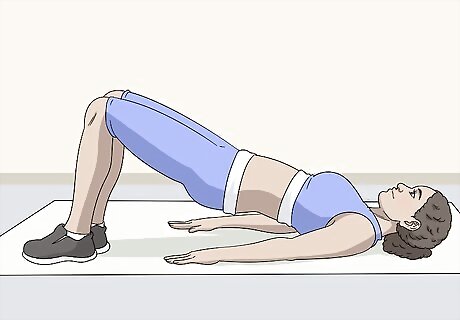
Build stronger hip flexors and glutes with power bridges. Power bridges work your lower core muscles. Start by lying on your back on an exercise mat with your knees bent so that your feet are flat on the floor. Rest your arms flat along your sides with your palms down. Lift your toes so that only your heels are touching the mat. Squeeze your glutes (the muscles in your buttocks) to raise your hips off the floor until your body is a straight line from your knees to your shoulders. Hold the bridge for 2 seconds, then lower about 3/4 of the way down. Do 20 repetitions of this exercise. Remember to keep your shoulders back, your neck long and relaxed. Use your arms for stability, but avoid pressing too hard into the mat with your hands.
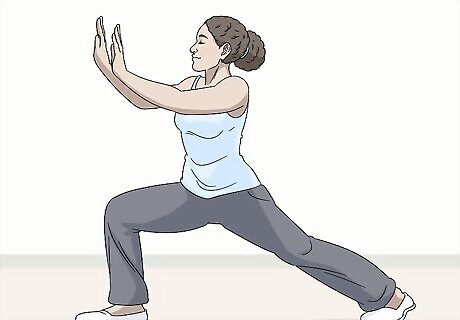
Try yoga or tai chi to improve your balance and flexibility. Yoga incorporates deep breathing and also includes poses that activate and strengthen your core. Tai chi also involves deep breathing and core-strengthening poses and movements. Both yoga and tai chi involve relatively slow, low-impact movements, so they can be good core-strengthening exercises if you have stiffness in your joints.
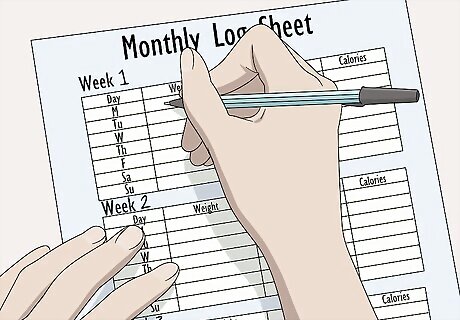
Repeat your tests once a month to evaluate your progress. Set aside a time at least once a month to perform the same tests you initially did to assess your core strength. Keep a log of your results so you can track your progress over time. Setting goals and rewarding yourself for progress is a good way to stay motivated. For example, if you're trying to hold a plank for 30 seconds but can currently only hold the position for 10 seconds, you might reward yourself when you get to 15 seconds and then again when you get to 20.



















Comments
0 comment